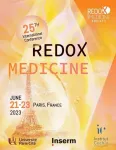(Press-News.org) Light pollution is increasing around the globe, both in its intensity and geographic extent. Researchers are documenting its impact on ecosystems, human health, and culture, while warning that the wasted light has financial costs, environmental impacts, and is responsible for substantial greenhouse gas emissions. In a special issue of Science, five papers discuss the growing adverse impacts of light pollution, along with the regulatory and technological solutions that could help mitigate its effects.
Artificial light at night has variable and complex impacts on plants, animals, and entire ecosystems, according to a paper by Annika Jägerbrand and Kamiel Spoelstra. They discuss how species respond to light pollution in various ways that often differ from other species, making it difficult to develop ways to mitigate the negative impacts of light across an ecosystem. Increasing light pollution is causing habitat loss, disruption of food webs, and declining insect populations.
In a second paper, Karolina Zielinska-Dabkowska and colleagues discuss how the human body responds to nocturnal light exposure. There are effects on visual, circadian, and neurobehavioral systems, due to exposure to urban streetlights, outdoor sporting arenas, and illuminated advertising. They highlight inequities in the levels of exposure to light pollution experienced by different human populations, and the cultural impacts of losing sight of the night sky.
In a third paper, Antonia Varela Perez discusses how professional and amateur astronomers are affected by light pollution. Rapidly increasing sources of pollution for astronomers include large constellations of satellites in orbit, radio-frequency interference, and the deployment of LED lighting that produces more blue light than earlier technologies. Varela Perez argues that locally designated dark sky areas provide benefits for tourism, but there is an urgent need for broader international regulations.
Miroslav Kocifaj and colleagues write in a fourth paper that researchers need better ways to measure and monitor artificial light at night to improve our understanding of light pollution’s causes and to develop mitigation strategies. They discuss how light pollution is measured from the ground and from space by remote sensing, using technologies including photometers, drones, and all-sky cameras. They argue that current data collection practices are affected by meteorological conditions, and that more information could be extracted from them if this is taken into account.
In a fifth paper, Martin Morgan-Taylor examines existing light pollution regulations in various jurisdictions and discusses how they can be improved. Morgan-Taylor suggests that better communication of the carbon emissions and economic waste of light pollution, along with an emphasis on safe but not excessive levels of outdoor lighting, could convince the public and commercial users to reduce the light pollution they generate.
END
Light Pollution Special Issue
2023-06-15
ELSE PRESS RELEASES FROM THIS DATE:
Aging fly atlas reveals cellular-level view of aging over the life of a model organism
2023-06-15
Tzu-Chiao Lu, Maria Brbic and colleagues have completed the Aging Fly Cell Atlas, a single-nucleus transcriptome map of the Drosophila melanogaster fly as it ages. Aging is known to be a risk factor for many diseases across many animals including humans, but understanding how the process affects cell composition and different cell types is still mostly unknown, making the new atlas a valuable reference in further studies. Lu et al. used single-nucleus RNA sequencing to generate the Fly Cell Atlas that profiles ...
Massive eruption of Ontong Java Plateau is younger than previously thought
2023-06-15
New high-precision argon isotope dating of the Ontong Java Plateau indicates that it is 10 million years younger than previously thought, according to Peter Davidson and colleagues. The Ontong Java Plateau is part of a massive underwater volcanic eruption – possibly the largest in Earth’s history – that took place in the Cretaceous Period in the equatorial western Pacific Ocean. This huge igneous emplacement has been proposed as the cause of Ocean Anoxic Event (OAE) 1a – a short period of severely reduced oxygen in the ocean - but the new dates for the eruption suggest it happened after OAE 1a. Some researchers ...
Cleaner air with a cold catalytic converter
2023-06-15
The so-called three-way catalytic converter in the exhaust system of a car consists of expensive materials and only works correctly when the exhaust gases have a temperature that is several hundred degrees Celsius.
As a result, when you start your car, or when you drive a hybrid car in which the petrol engine and electric motor alternate between driving the powertrain, the gases leaving the exhaust still contain toxic carbon monoxide. In a new Science article, scientists led by Emiel Hensen now show that by modifying the carrier material of the catalyst, it is possible to almost completely convert toxic carbon monoxide into carbon dioxide gas even at room temperature.
Noble ...
Illusions are in the eye, not the mind
2023-06-15
Numerous visual illusions are caused by limits in the way our eyes and visual neurones work – rather than more complex psychological processes, new research shows.
Researchers examined illusions in which an object’s surroundings affect the way we see its colour or pattern.
Scientists and philosophers have long debated whether these illusions are caused by neural processing in the eye and low-level visual centres in the brain, or involve higher-level mental processes such as context and prior knowledge.
In the new study Dr Jolyon Troscianko, from the University of Exeter, co-developed a model that suggests simple limits to neural responses – not deeper ...
If art is how we express our humanity, where does AI fit in?
2023-06-15
The rapid advance of artificial intelligence has generated a lot of buzz, with some predicting it will lead to an idyllic utopia and others warning it will bring the end of humanity. But speculation about where AI technology is going, while important, can also drown out important conversations about how we should be handling the AI technologies available today.
One such technology is generative AI, which can create content including text, images, audio, and video. Popular generative AIs like the chatbot ...
NCCN convenes policy summit assessing impact of geography on cancer outcomes, examining rural and urban divide
2023-06-15
WASHINGTON, D.C. [June 15, 2023] — Today, the National Comprehensive Cancer Network® (NCCN®)—an alliance of leading cancer centers—convened a policy summit to examine how geography impacts cancer outcomes.
NCCN Chief Executive Officer, Robert W. Carlson, MD, opened the event with a focus on equity.
“NCCN’s work is guided by the idea that where you live should not impact whether you live,” said Dr. Carlson. “NCCN Guidelines are one free resource to make sure everyone, everywhere, has access to cancer care based on the latest evidence ...
Shaping the future of medicine: Redox Science takes center stage at the International Conference of Redox Medicine Society in Paris
2023-06-15
Paris is set to host the highly anticipated 25th International Conference of the Redox Medicine Society, where global leaders and experts from the field will converge to unveil groundbreaking advancements and shed light on the future of Redox Medicine. Taking place from June 21 to June 23, the conference will feature over 61 dynamic communications, including major presentations, short talks, and poster sessions, showcasing the latest research and discoveries in the field of redox reactions, oxidative stress, and their profound ...
New, precise, and efficient DNA sequencing method may lead to easier testing and earlier cancer detection
2023-06-15
PHILADELPHIA – Researchers from the Perelman School of Medicine at the University of Pennsylvania have invented a new way to map specific DNA markings called 5-methylcytosine (5mC) which regulate gene expression and have key roles in health and disease. The innovative technique allows for scientists to profile DNA using very small samples and without damaging the sample which means it can potentially be used in liquid biopsies (testing for cancer markers in the bloodstream) and early cancer detection. Additionally, unlike ...
We’ve pumped so much groundwater that we’ve nudged the Earth’s spin
2023-06-15
American Geophysical Union
15 June 2023
Release No. 23-25
For Immediate Release
This press release is available online at: https://news.agu.org/press-release/weve-pumped-so-much-groundwater-that-weve-nudged-the-earths-spin
AGU press contact:
Rebecca Dzombak, news@agu.org (UTC-4 hours)
Contact information for the researchers:
Ki-Weon Seo, Seoul National University, seokiweon@snu.ac.kr (UTC+9 hours)
WASHINGTON — By pumping water out of the ground and moving it elsewhere, humans have shifted such a large mass of water that the Earth tilted nearly 80 centimeters (31.5 inches) east between 1993 and 2010 alone, according to a new study published in Geophysical Research Letters, ...
Body image concerns significantly higher in women living with PCOS
2023-06-15
Women living with polycystic ovary syndrome (PCOS) experience greater body image concerns than individuals without the condition, according to research being presented Saturday at ENDO 2023, the Endocrine Society’s annual meeting in Chicago, Ill.
PCOS affects 7% to 10% of women and is the most common cause of infertility. It is also linked to metabolic health problems such as diabetes, cardiovascular health conditions, and mental health conditions including depression and anxiety.
“Although PCOS, depression and anxiety have a substantial correlation, ...




